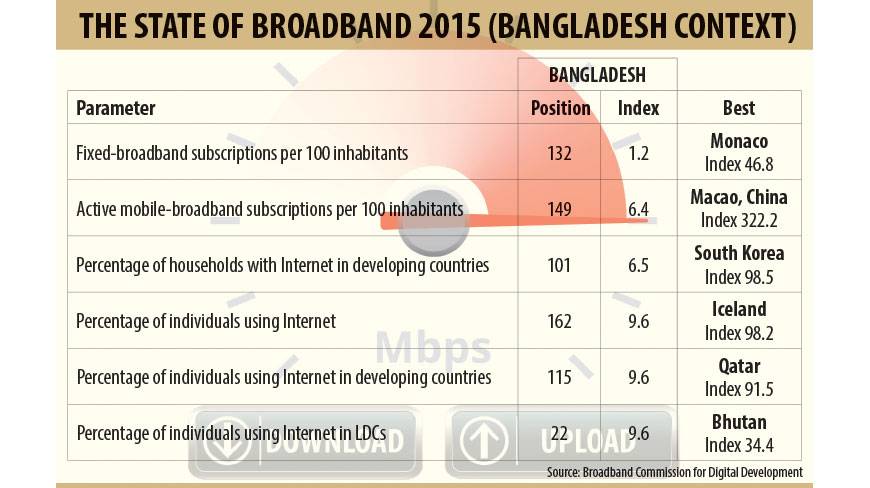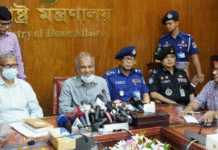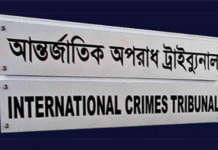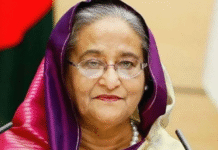Bangladesh may have formulated the National Broadband Policy six years ago, but making a significant improvement on current internet coverage is still a steep challenge.
According to a report titled “The state of Broadband 2015,” published by the global monitoring body Broadband Commission for Digital Development, Bangladesh is one of the 148 countries to have a policy of that kind.
But in most of the parameters of that report, Bangladesh is ranked among the worst of performers in terms of broadband internet penetration and proliferation.
In 2014, only 1.2 out of every 100 people in the country had fixed broadband subscriptions, the report says.
Monaco, the small sovereign city-state on the French Reviera in Western Europe that has a population of about 36,500, tops this list with 46.8 fixed-broadband subscriptions per 100 capita.
South Asian neighbours India, Pakistan and Nepal are all ranked very close to Bangladesh at 131, 135 and 139 respectively.
Interestingly, just like the table topper, Bangladesh’s less populated neighbours like the Maldives and Bhutan are ranked higher at 97 and 109 respectively.
The report comes at a time when Bangladesh is planning to export a significant portion of its “unused” internet bandwidth.
Bangladesh’s submarine cable, whose lifetime ends in 12 years from now, has a bandwidth capacity of 200 gigabit per second (Gbps), but only about 32Gbps is sold. Bangladesh will get another undersea cable of around 1,400Gbps in 2016.
The process of exporting 10Gbps to the southeastern Indian states of Tripura and Meghalaya is almost complete and the government has recently approved a 57Gbps bandwidth export to Italy. Plans for exporting more unused bandwidth to countries like Bhutan, Japan and some other Indian states are also on.
The report says that the number of active mobile-broadband subscriptions per 100 inhabitants in Bangladesh was 6.4 in 2014, compared to Macao, China that had the best rate of 322.2 in the world.
In 2014, in a list of developing countries, only 6.5% households in Bangladesh had internet while South Korea had the best figures of 98.5%.
Even among the least developed countries (LDCs), Bangladesh is ranked 22 with only 9.6% individuals using the internet. Among neighbours, only Bhutan, who ranks at the top with 34.4% individual usage figure, and Nepal, at 14 with 15.4% usage, are ahead of Bangladesh.
Citing latest data gathered by the International Telecommunication Union (ITU), the report states that around 43% of the world’s population is now online with some form of regular access to the internet.
“This leaves 57% or some 4.2 billion of the world’s people who still do not enjoy regular access to the Internet.”
Terming digital divide a stubbornly persistent problem, the report also expresses concern, saying: “Alarmingly, there are indications that Internet growth is slowing, as broadband services extend out of urban areas to more remote, less densely populated areas.”
The outcome document – titled “Transforming our World: The 2030 Agenda for Sustainable Development” – of the upcoming September 25-27 United Nations General Assembly acknowledges that “the spread of information and communication technology and global interconnectedness has great potential to accelerate human progress” and to develop knowledge societies.
The Broadband Commission for Digital Development was established in 2010 by the ITU and the United Nations Educational, Scientific and Cultural Organisation (Unesco).
The commission was tasked with promoting the adoption of effective and inclusive broadband policies and practices in countries around the world, with a view to achieving development goals and empowering every woman and man, and every society, through the benefits of broadband.
Source: Dhaka Tribune










